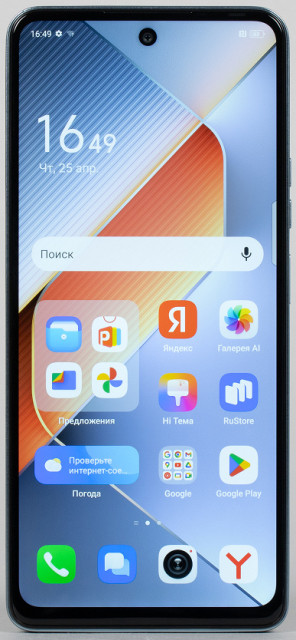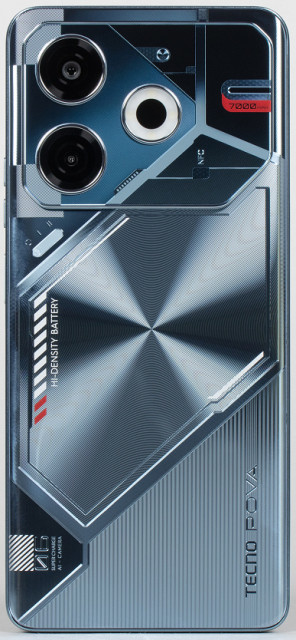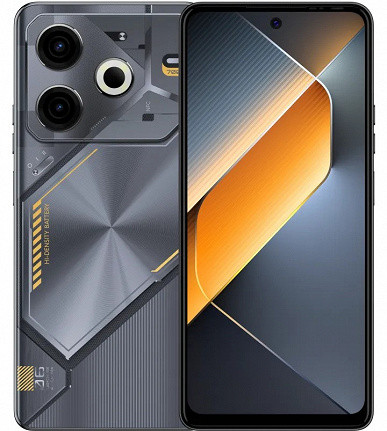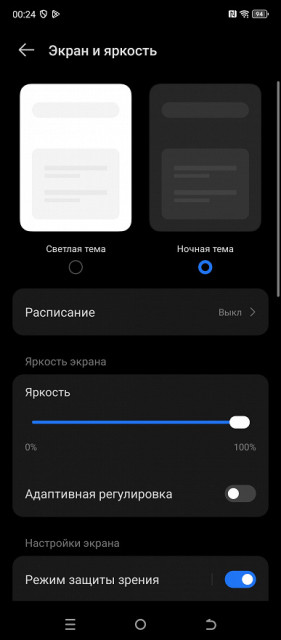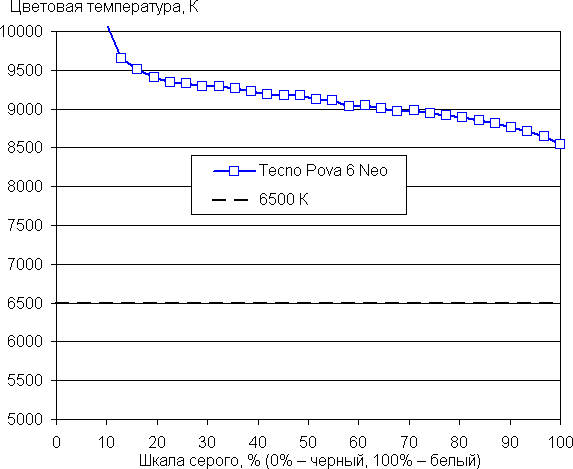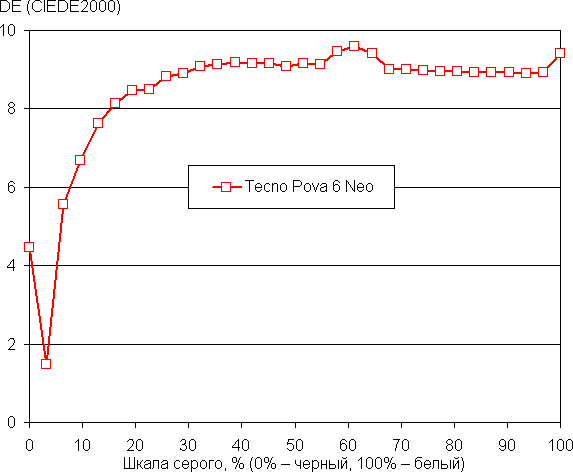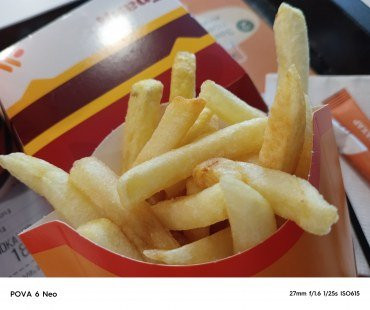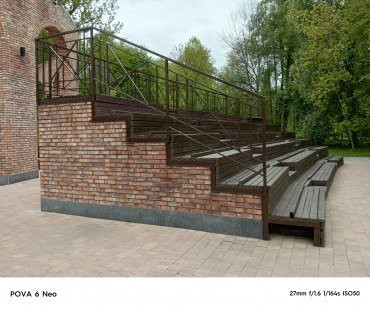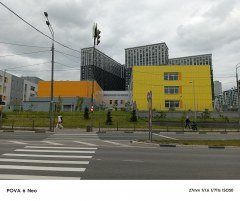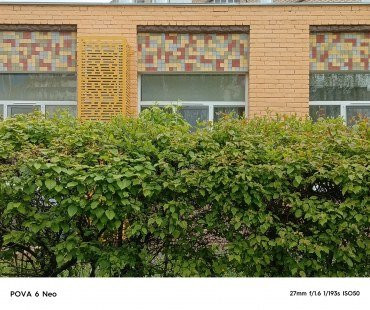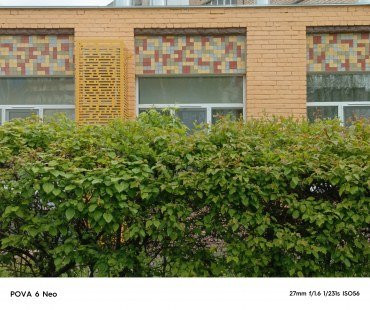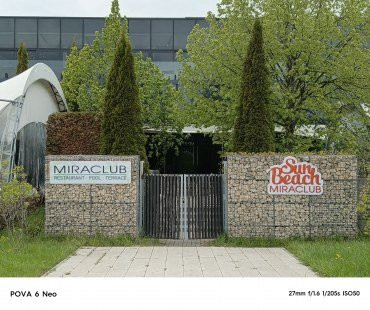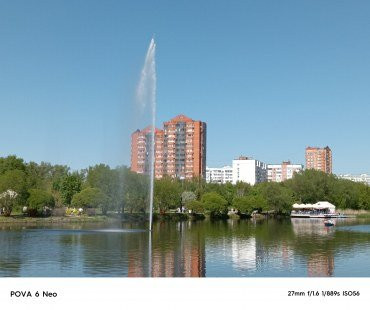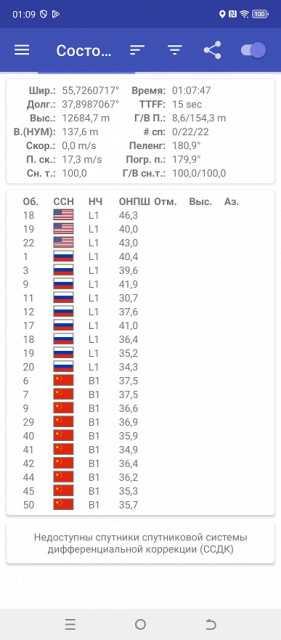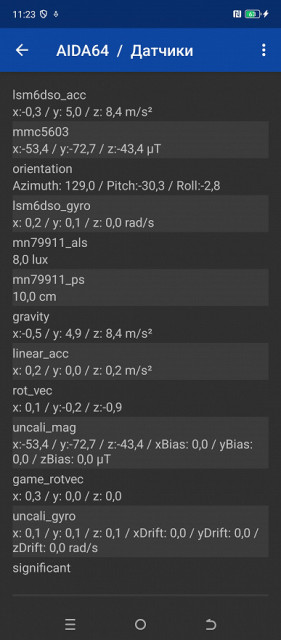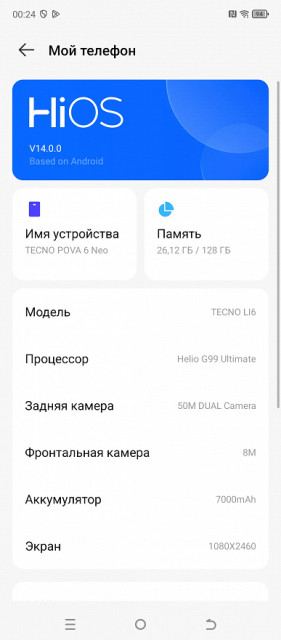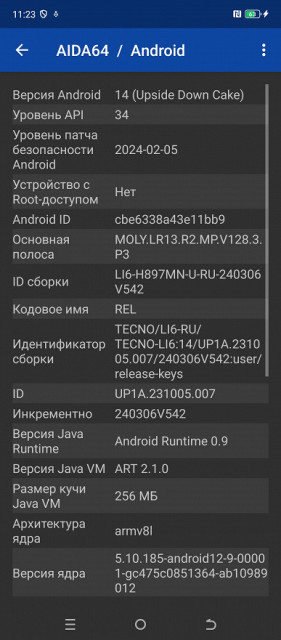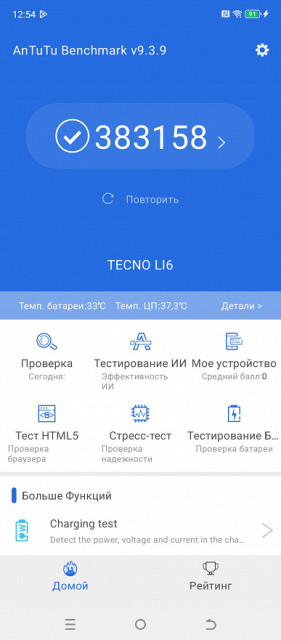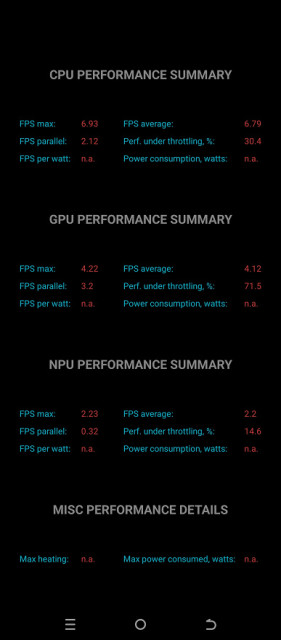Tecno has announced the Pova 6 and Pova 6 Neo smartphones, which are toned down versions of the previously launched Pova 6 Pro 5G. The Pova 6 Neo model is the most budget-friendly of all presented. It reduced the resolution of the main camera and simplified the screen, but increased the battery capacity to 7000 mAh.
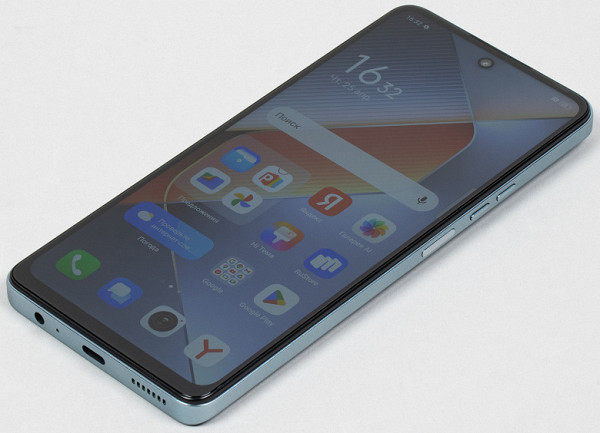
Key Features of Tecno Pova 6 Neo (Model LI6)
- SoC Mediatek Helio G99 Ultimate, 8 processor cores (2×Cortex-A76 @2.2 GHz + 6×Cortex-A55 @2.0 GHz)
- GPU Mali-G57 MC2
- Operating system Android 14, HiOS 14
- Touch display IPS, 6.78″, 1080×2460, 20:9, 396 ppi, 120 Hz
- RAM 8 GB, internal memory 128/256 GB
- microSD support (independent slot)
- Nano-SIM support (2 pcs.)
- Networks 2G GSM, 3G WCDMA, 4G LTE
- GPS, Glonass, BDS, Galileo
- Wi-Fi 5 (2.4 and 5 GHz)
- Bluetooth 5.2, A2DP
- NFC
- USB 2.0 Type-C, USB OTG
- 3.5mm headphone audio output
- Camera 50 MP, video 1440р@30 fps
- Front camera 8 MP
- Proximity and lighting sensors, magnetic field, accelerometer, gyroscope
- Fingerprint scanner (side-mounted)
- 7000 mAh battery, 33 W charging
- Dimensions 169×77×9.2 mm
- Weight 227 g
Appearance and ease of use
The Tecno Pova 6 Neo smartphone comes in a durable cardboard box with a sleek design. The kit includes a 33 W charger, connection cable and protective case.
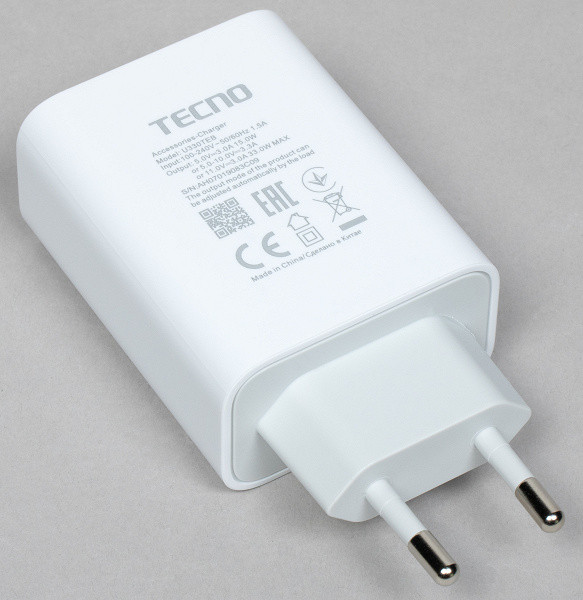
The Tecno Pova 6 Neo has a modern design with clean, angular lines, without rounded shapes or curved front glass. The wide side frame provides a comfortable grip. The smartphone looks stylish and functional. Its design continues the tradition of previous models of the Pova series, inspired by the technological style of futuristic robots Turbo Mecha, which emphasizes its gaming focus. An ideal choice for a youth audience.
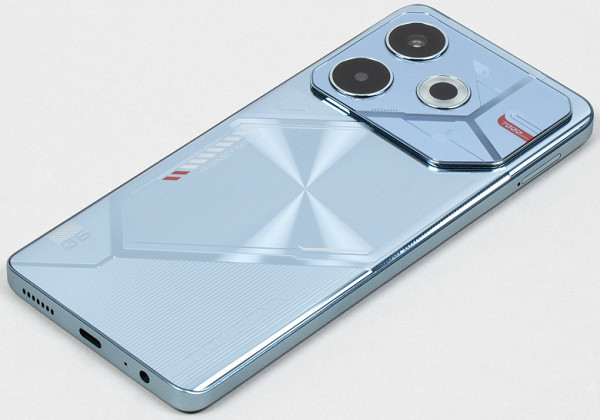
Overall, the smartphone looks decent: the matte side frame does not slip or get dirty, with a slight metallic sheen. The back panel is made of smooth lacquered plastic that imitates transparent glass, underneath which the complex texture of a futuristic design is visible. Although the back panel is smooth, the smartphone feels confident in your hands and does not slip.
You can, of course, cover it all with a complete flexible transparent case, but there is no particular need for this, the smartphone’s body is already quite practical.

The image of the smartphone is complemented by a protruding camera block with broken geometry. A powerful circular LED flash is built into the same unit, which shines extremely brightly.
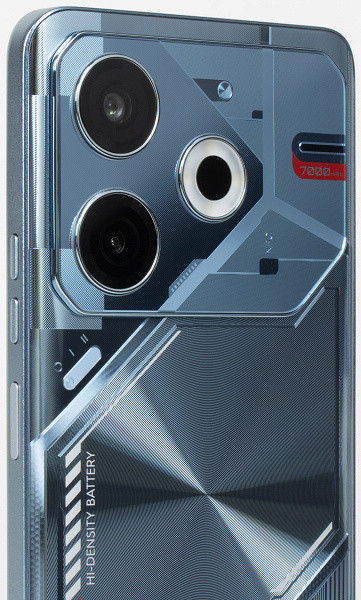
The side buttons are wide, but have a very short travel. They are located on one side right under the finger, this is convenient, but the depth of travel needed to be made greater.

The fingerprint scanner is located in the lock key area, where it belongs. The scanner operates quickly and accurately; it is much more convenient than an under-screen scanner.
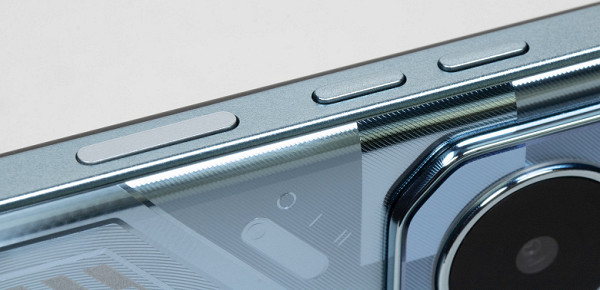
A single front camera eye is installed behind a circular cutout in the screen matrix in the center of the top edge.

The retractable tray can accommodate three cards at once: two Nano-SIM cards and a microSD memory card.
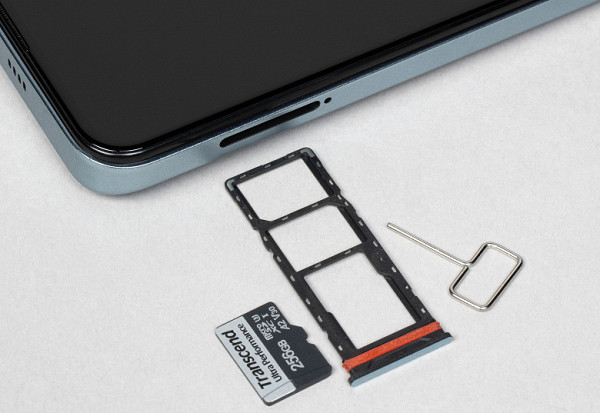
At the bottom end there is a speaker, microphone and USB Type-C connector, as well as a 3.5 mm audio output for a wired headset, which is good news.

The upper end is given over to an additional speaker.

The smartphone is available in three colors: silver, black and green. The case is protected against moisture and dust according to the IP53 standard, which allows it to withstand splashes of water and use the touch display with wet fingers in the rain, but does not protect against complete immersion in water.
Screen
The Tecno Pova 6 Neo smartphone features a 6.78-inch IPS display with a resolution of 1080×2460 (20:9 aspect ratio) covered with flat protective glass. The screen dimensions are 69x158 mm, and the pixel density is 396 ppi. The frame width around the screen is about 3.5mm on the sides, 4mm on the top and 7mm on the bottom. The screen supports a 120Hz refresh rate.
The front surface of the screen is a glass plate with a mirror-smooth surface that is scratch-resistant. The screen has better anti-glare properties compared to the Google Nexus 7 (2013), and also has an effective oleophobic coating, thanks to which fingerprints are easier to remove and appear less frequently than on regular glass.
When manually adjusting the brightness and displaying the white field on the entire screen, the maximum brightness reaches 470 cd/m². This is a fairly high figure, and combined with excellent anti-glare properties, it allows you to use the smartphone even on a sunny day outside. The minimum brightness is 4 cd/m², which allows you to comfortably use the device in complete darkness. The smartphone is equipped with automatic brightness control; the light sensor is located on the front panel near the top edge, to the right of the front speaker grille. In automatic mode, the screen brightness is adjusted depending on the level of illumination: in complete darkness it decreases to 4 cd/m², in a lit office (about 550 lux) it is set at 130 cd/m², and in direct sunlight it increases to 470 cd/m² .
The auto-brightness function works adequately, but does not allow the user to adjust it to individual preferences. Regardless of the brightness level, there is no significant backlight modulation, which eliminates screen flickering.
The smartphone uses an IPS-type matrix, with a subpixel structure typical for this technology, which is confirmed by microphotographs.

For comparison, here are photographs showing the same images on the screens of the Tecno Pova 6 Neo (top) and Nexus 7 (bottom) smartphones. The brightness of the screens is initially set to approximately 200 cd/m², and the color balance on the camera is set to 6500 K.
Perpendicular view of the white field:
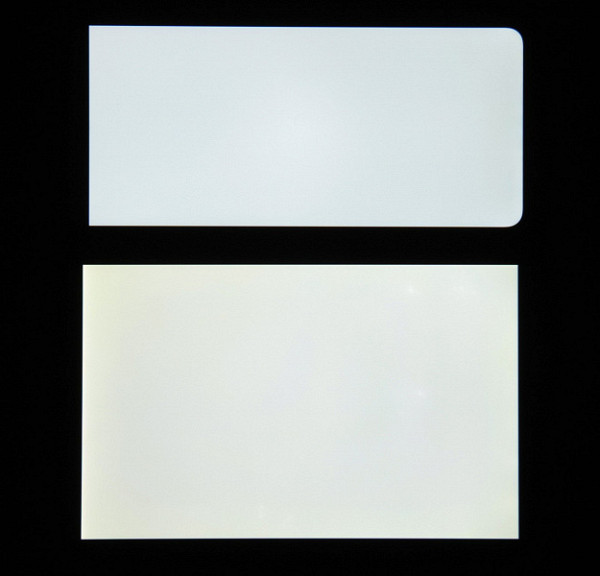
Note the good uniformity of brightness and color tone of the white field.
And a test picture:

The colors on the smartphone screen have a saturation close to natural, while the color balance of the Nexus 7 and Tecno Pova 6 Neo is noticeably different.
The smartphone screen has good viewing angles, without significant color distortion even with large viewing deviations from the perpendicular and without inverting shades. However, when deviated diagonally, the black field becomes very bright and acquires a red-violet hue.
When viewed perpendicularly, the uniformity of the black field is good (for clarity, the backlight brightness on the smartphone is set to maximum):
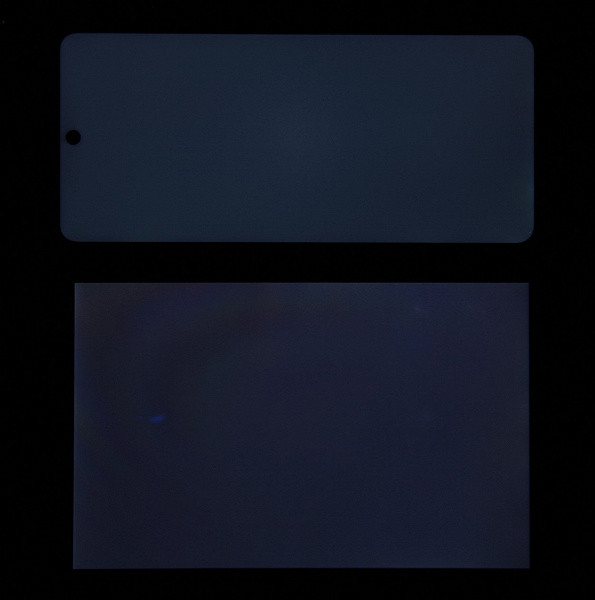
The contrast in the center of the screen is high, about 1500:1. The response time for the black-white-black transition is 16 ms (8 ms on + 8 ms off). The transition between grayscales from 25% to 75% and back takes a total of 28 ms.
Analysis of the gamma curve, constructed using 32 points with equal intervals based on the numerical value of the gray shade, did not reveal any dips in either light or dark areas. The value of the approximating power function is 2.44, which is higher than the standard 2.2, but the actual gamma curve deviates significantly from the power function:

This device uses aggressive dynamic adjustment of the backlight brightness depending on the nature of the displayed image: on dark and medium-bright images, the backlight brightness is automatically reduced. This leads to the fact that the resulting dependence of brightness on hue (gamma curve) does not correspond to the gamma curve of a static image, since the measurements were carried out with sequential display of shades of gray on almost the entire screen. In this regard, a number of tests, such as determining contrast, response time and comparing black light at angles, were carried out using special patterns with a constant average brightness, rather than solid fields across the entire screen.
Non-switchable brightness adjustment, while useful in some cases, can be uncomfortable, reduces the visibility of shadow gradations in dark images, and makes the screen more difficult to read in bright light because the backlight brightness is significantly reduced in medium-bright images.
The screen color gamut is slightly wider than sRGB.
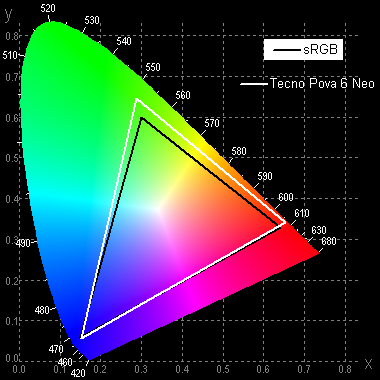
The spectra show that the matrix filters moderately mix the components with each other:

The default grayscale setting is a compromise because the color temperature is significantly higher than the standard 6500 K and is 8400 K on a white background. This device has the ability to adjust the color balance using the hue adjustment:
However, even with maximum correction, the color temperature remains above standard (6900 K), and the deviation from the blackbody spectrum (ΔE) increases to 15. The settings also provide the ability to reduce the intensity of the blue component in order to protect vision. Bright light can affect the daily cycle (circadian rhythm), but this can be compensated for by reducing the brightness to a comfortable level, without the need to distort the color balance by reducing the contribution of blue light. This setting is not effective for correcting color balance, since even with minimal correction the color temperature approaches the standard 6500 K, but the ΔE reaches 11. It is recommended to leave all settings at their default to achieve maximum brightness. Despite the high color temperature, the ΔE deviation remains below 10, which is acceptable for a consumer device. At the same time, color temperature and ΔE change little from one shade to another, which has a beneficial effect on the visual assessment of color balance.
In the screen settings, you can enable a mode with an increased refresh rate to 90 or 120 Hz, which at least leads to an increase in the smoothness of scrolling lists in the menu.
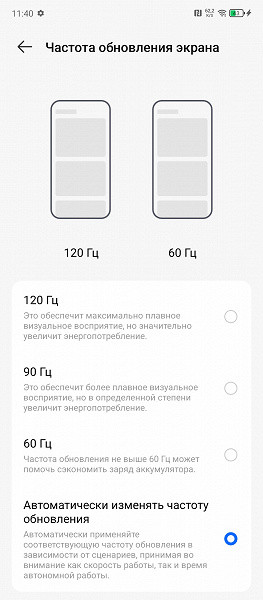
The conclusions about this device are the following: the screen has a high maximum brightness (470 cd/m²) and excellent anti-glare properties, which allows you to use the device outdoors even on a bright sunny day. In complete darkness, the screen brightness can be reduced to a comfortable level (minimum 4 cd/m²). Automatic brightness adjustment works adequately, but does not provide customization options for the user.
Among the advantages of the screen, it is worth noting the effective oleophobic coating, the absence of air gaps between the layers of the screen and the absence of visible flicker. The screen contrast is high (1500:1), and a refresh mode with an increased frequency of up to 90 or 120 Hz is also available.
However, the disadvantages include low stability of black color when looking at an angle to the screen and aggressive dynamic brightness adjustment that cannot be turned off. Despite the importance of these characteristics for this class of devices, the quality of the screen as a whole cannot be considered high.
Camera
The Tecno Pova 6 Neo smartphone comes with a 50MP primary rear camera and an f/1.6 lens. In addition to the main camera, there is a secondary sensor with a resolution of 2 MP. The main camera is equipped with PDAF phase detection autofocus, but there is no image stabilization.
The camera takes photos at 12.5MP by default using 4-in-1 pixel binning technology, but the option to switch to a full 50MP resolution is also available. Full resolution photos may improve detail slightly, but when viewed at full size they appear unsatisfactory due to noise and artifacts.
A smartphone that is not a high-end smartphone does not provide breakthrough photography. Photo quality is typical of budget devices: detail is limited, and too much edge sharpness detracts rather than improves the image. The dynamic range does not allow shadows, light and midtones to be sufficiently conveyed — there are noticeable overexposures, while the pictures remain dark.
Here are examples of photos taken with the main camera in automatic mode:
Night mode greatly overexposes the image, which reduces detail due to noise reduction, and makes colors oversaturated. The resulting images can only be used as miniatures, and even then they do not properly convey the atmosphere of nightlife.

The zoom here is only digital, and even the 12.5-megapixel image is nothing interesting.
The maximum video recording resolution is 1440p at 30 frames per second. Despite the potentially good image quality, it is severely marred by flickering. To achieve a frame rate of 60 frames per second, you will have to lower the resolution to 1080p, but the detail will become insufficient. Sound recording is good, but the device struggles with wind noise.
Telephone and communications
The smartphone supports most mobile networks up to 4G, Wi-Fi 5 in two bands and Bluetooth 5.2, and is also equipped with NFC. However, there is no support for 5G and e-SIM networks. In the Moscow urban area, the device demonstrates reliable operation in wireless networks, without losing connection and quickly restoring it after interruptions. The built-in sensors, including the gyroscope, work properly.
The single-channel navigation module supports GPS, Glonass, BDS, Galileo and QZSS. During a cold start, the first satellites are detected quickly, and the positioning accuracy is not satisfactory.
The volume of the speaker is sufficient, the voice of the interlocutor is clearly audible. The vibration when calling is a little rustic and rough due to the lack of a linear vibration motor.
Software and multimedia
The Tecno Pova 6 Neo smartphone runs on the Android 14 operating system with the HiOS 14 shell. The interface is well adapted, freed from annoying advertising and redundant functions, which made it more concise and optimized.
The retractable curtain is divided into two parts. The Google Play app store and Google services are accessible without any problems. The Always-On Display function is implemented with limitations: the information screen is activated only when touched. There is also a fashionable Dynamic Port function, an analogue of the Dynamic Island, popular this year.
The smartphone is equipped with stereo speakers, but they are not too loud, and the sound is not the clearest, especially in the highs and not very pronounced mids, without sufficient lows. There is a 3.5mm audio output for wired headphones, which is a plus. The Dolby sound system provides ready-made settings in the form of presets.
Performance
The Tecno Pova 6 Neo smartphone is powered by an octa-core Mediatek Helio G99 Ultimate processor and a Mali-G57 MC2 GPU. It has 8 GB of RAM and is available in 128 or 256 GB of built-in storage. To expand the memory, there is support for memory cards, as well as the ability to connect external devices via the USB Type-C port in USB OTG mode.
The Mediatek Helio G99 Ultimate platform is an overclocked version of the Mediatek Helio G99. The performance of this platform can be described as below average at the moment. It is sufficient for basic tasks and even simple games, although the interface can sometimes lag, especially when performing resource-intensive operations such as saving screenshots. However, the processor is not capable of providing smooth 4K video recording at 60 fps.
Testing in comprehensive tests AnTuTu and GeekBench:
All results obtained during testing of the smartphone were conveniently presented in tables. The tables also include results from several other devices from various market segments, which were also tested on the latest versions of popular benchmarks. This is done for a visual comparison of the obtained numerical values. However, due to the limitations of a single comparison, results for many other worthy and relevant models that have been tested on previous versions of the benchmark programs are not presented.
| Tecno Pova 6 Neo (Mediatek Helio G99 Ultimate) | Huawei nova 12s (Qualcomm Snapdragon 778G) | OnePlus Nord 3 5G (Mediatek Dimensity 9000) | Realme 12 Pro+ (Qualcomm Snapdragon 7s Gen2) | Redmi Note 13 Pro+ (Mediatek Dimensity 7200 Ultra) | |
|---|---|---|---|---|---|
| AnTuTu (v9.x) (bigger is better) | 383158 | 546957 | 789188 | 576685 | 669583 |
| GeekBench 6 (bigger is better) | 726/2004 | 996/2453 | 1077/3175 | 894/2801 | 1126/2643 |
Testing the graphics subsystem in GFXBenchmark gaming tests:
| Tecno Pova 6 Neo (Mediatek Helio G99 Ultimate) | Huawei nova 12s (Qualcomm Snapdragon 778G) | OnePlus Nord 3 5G (Mediatek Dimensity 9000) | Realme 12 Pro+ (Qualcomm Snapdragon 7s Gen2) | Redmi Note 13 Pro+ (Mediatek Dimensity 7200 Ultra) | |
|---|---|---|---|---|---|
| GFXBenchmark Aztec Ruins OpenGL (Onscreen, fps) | 18 | 34 | 96 | 35 | 50 |
| GFXBenchmark Aztec Ruins Vulkan (Onscreen, fps) | 16 | 38 | 105 | 39 | 55 |
| GFXBenchmark Car Chase ES 3.1 (1080p Offscreen, fps) | 16 | 33 | 79 | thirty | 43 |
| GFXBenchmark Manhattan ES 3.1 (1080p Offscreen, fps) | 28 | 56 | 151 | 54 | 74 |
| GFXBenchmark T-Rex (1080p Offscreen, fps) | 67 | 133 | 293 | 122 | 191 |
Testing in browser cross-platform tests:
| Tecno Pova 6 Neo (Mediatek Helio G99 Ultimate) | Huawei nova 12s (Qualcomm Snapdragon 778G) | OnePlus Nord 3 5G (Mediatek Dimensity 9000) | Realme 12 Pro+ (Qualcomm Snapdragon 7s Gen2) | Redmi Note 13 Pro+ (Mediatek Dimensity 7200 Ultra) | |
|---|---|---|---|---|---|
| Google Octane 2 (bigger is better) | 25430 | 24923 | 29390 | 30529 | 39276 |
| JetStream (bigger is better) | 78 | 67 | 76 | 85 | 79 |
Memory speed test results:
Heat
We test for performance degradation when heated using the Burnout Benchmark program, which allows you to load the CPU, GPU and NPU:
| Stress on | Heating performance as a percentage of maximum |
|---|---|
| CPU | thirty% |
| GPU | 72% |
| NPU | 15% |
Battery life
The Tecno Pova 6 Neo smartphone comes with a 7000mAh battery, which is significantly higher than the average 5000mAh battery. However, in the test results, the autonomy of the device was at the level of devices with a conventional battery.
Testing was carried out at standard power consumption levels without using power saving features, although such features are present in the device. Under test conditions, the minimum comfortable screen brightness was set (about 100 cd/m²). During testing, the smartphone was used for continuous reading in the Moon+ Reader application (with a standard light theme), watching videos in HD quality (720p) and playing Injustice 2 with automatic graphics settings.
| Battery capacity | Reading mode | Video mode | 3D Game Mode | |
|---|---|---|---|---|
| Tecno Pova 6 Neo | 7000 mAh | 22:00 | 19:00 | 8:00 am |
| Tecno Spark 20 Pro+ | 5000 mAh | 18:00 | 14:00 | 6:00 am |
| Vivo V30 | 5000 mAh | 23:00 | 21:00 | 8:00 am |
| Vivo V29 | 4600 mAh | 21:00 | 19:00 | 8:30 a.m. |
| Infinix GT 10 Pro | 5000 mAh | 20:30 | 18:00 | 8:30 a.m. |
| Tecno Camon 20 Pro 5G | 5000 mAh | 19:00 | 16:00 | 7:00 am |
| Vivo V27 | 4600 mAh | 25:00 | 19:00 | 7:00 am |
All this data is presented in the best possible way, achieved under «ideal» conditions, including no SIM cards installed. Any changes in usage will likely reduce these results.
Using the included wall charger, the smartphone charges in about two hours. Wireless charging is not supported.
Bottom line
The smartphone belongs to the budget segment, which implies basic technical characteristics. Expectations from it shouldn't be high considering its price point. However, its distinctive design may appeal to a younger audience, and the large battery capacity may be attractive to those who value a device's long battery life.

